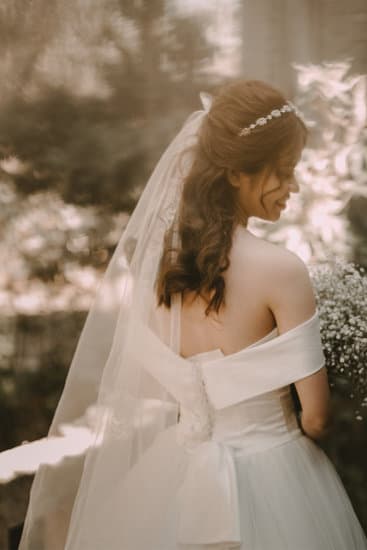Wondering how to address wedding invitations to an engaged couple? Wedding invitation etiquette can be a little tricky, especially when it comes to addressing the invite to a couple who is not yet married. Whether you are opting for a traditional approach or looking for more modern and alternative ways, there are certain guidelines and considerations to keep in mind.
When addressing wedding invitations to engaged couples, it’s important to follow proper etiquette while also considering the individual preferences and circumstances of the couple. The traditional way of addressing wedding invitations may not always fit every situation, so understanding the various options available will help you navigate through this process with ease.
In this article, we will explore the traditional and modern ways of addressing wedding invitations to engaged couples. We will also provide tips on how to handle address changes and updates after the invitations have been sent out.
Additionally, we’ll cover common mistakes to avoid and offer guidance on addressing invitations for same-sex couples or couples with different last names. By understanding these etiquette guidelines, you can ensure that your wedding invitations are delivered with thoughtfulness and consideration for the engaged couple.
The Traditional Way of Addressing Wedding Invitations to Engaged Couples
When addressing wedding invitations to engaged couples, it is essential to follow proper etiquette to show respect for both individuals. The traditional way of addressing wedding invitations to engaged couples involves using their titles and full names. This approach reflects a sense of formality that is often associated with wedding ceremonies.
Using Formal Titles and Full Names
When addressing the outer envelope of the invitation, it is customary to include the titles and full names of the engaged couple. For example, if the couple is not married yet, the invitation would be addressed as “Mr. John Smith and Ms. Rebecca Johnson.” If one or both individuals hold professional titles, such as doctor or military rank, those titles should also be included when addressing the envelope.
Addressing Inner Envelopes
In addition to addressing the outer envelope, it is also customary to address the inner envelope with a more familiar and personal tone. In this case, you may simply use first names without titles, such as “John and Rebecca.” This allows for a more intimate feel when inviting the couple to your special event.
Following these traditional guidelines for addressing wedding invitations to engaged couples can help ensure that your invitations are received with respect and thoughtfulness. It shows that you have taken the time to acknowledge each individual within the couple while understanding their upcoming union.
Modern and Alternative Ways of Addressing Wedding Invitations to Engaged Couples
When addressing wedding invitations to engaged couples, it’s important to consider modern and alternative ways of doing so. While traditional etiquette provides guidance, many couples today prefer more casual and inclusive language when it comes to their wedding invitations.
Here are some modern and alternative ways to address wedding invitations to engaged couples:
- Drop the titles: Instead of using formal titles such as “Mr.” or “Ms.”, you can simply use the couple’s first names. For example, “Alexandra and Taylor” instead of “Mr. Taylor Smith and Ms. Alexandra Johnson”.
- Use inclusive language: If the couple is not married yet, you can use inclusive language on the invitation. For example, you can say “together with their families” instead of specifying who is hosting the wedding.
- Consider a joint last name: If the couple plans on taking a joint last name after getting married, you can use both of their last names on the invitation. For example, “Alexandra Johnson and Taylor Smith-Miller” shows respect for both individuals in the couple.
It’s important to remember that every engaged couple is unique, so these suggestions may not fit everyone’s preferences. Always consider what will make the couple feel comfortable and respected when addressing their wedding invitations.
In sum, modernizing your approach to addressing wedding invitations for an engaged couple is all about accommodating evolving relationships and societal norms with grace and respect. By considering these alternative strategies, you can ensure that your efforts in this area are well-received by any couple.
Tips for Addressing Wedding Invitations if the Couple Has Different Last Names
When addressing wedding invitations for engaged couples with different last names, it’s important to be mindful of traditional etiquette while also considering modern practices. Here are some tips on how to address wedding invitations if the couple has different last names:
1. Use separate lines: One way to address the invitation is to use separate lines for each person’s name. For example:
2. Alphabetical order: If the couple has decided to keep their own last names, you can list their names in alphabetical order.
3. Consider using titles: When addressing the envelope, consider using titles such as “Ms.” or “Mr.” before each person’s name.
4. Include both last names: Another option is to include both last names of the couple on the invitation, such as “John Smith and Jane Doe.”
Remember that the most important thing is to show respect and consideration for both individuals in the couple when addressing the wedding invitation. By following these tips, you can ensure that both partners feel equally represented and honored in your invitation.
This section provides valuable insights into honoring engaged couples with different last names through their wedding invitations. By understanding and implementing these tips, you can create a thoughtful and respectful invitation that celebrates both individuals’ identities within the couple.
Addressing Wedding Invitations to Same-Sex Engaged Couples
Understanding the Importance of Inclusivity
In today’s modern society, it is crucial to ensure that all couples feel included and respected when it comes to addressing wedding invitations. This includes same-sex engaged couples, who should be given the same level of consideration and etiquette as any other couple. Understanding the importance of inclusivity and sensitivity when addressing wedding invitations to same-sex engaged couples is essential for creating a welcoming and inclusive atmosphere for all guests.
The Traditional Approach
Traditionally, wedding invitations have been addressed using specific titles such as “Mr. and Mrs.” or “Mr. and Mr.” for same-sex couples, followed by their last names. However, in today’s more progressive society, there are alternative approaches that can be taken to address wedding invitations to same-sex engaged couples in a way that reflects their unique partnership.
Modern and Inclusive Addressing
A more modern and inclusive approach to addressing wedding invitations to same-sex engaged couples would be to simply use their first names followed by their last names, without specific titles. For example, “Alex Smith and Taylor Johnson” can be used for a more neutral approach that does not assume traditional gender roles or titles. Another option could be using “The Smith-Johnson Family” if the couple has opted for a shared last name or if they have children together.
By understanding the proper ways to address wedding invitations to same-sex engaged couples, you can ensure that your invitations are respectful, inclusive, and reflective of the diverse nature of love and partnership in today’s society.
Including Additional Information for Engaged Couples on the Wedding Invitation
When addressing wedding invitations to engaged couples, it’s important to consider including additional information that may be relevant to their situation. One important detail to include is whether the couple will be having a joint last name after the wedding. If so, it’s essential to clarify this on the invitation. For example, if the bride will be taking the groom’s last name, you can address the invitation as “Mr. John Smith and Mrs. Jane Johnson”.
Another piece of crucial information to include on the wedding invitation for engaged couples is whether they will be hosting the wedding together or if one set of parents will be hosting. In traditional wedding etiquette, it was customary for the bride’s parents to host and issue the invitations, but modern practices have shifted towards more egalitarian arrangements.
If both sets of parents are contributing financially to the wedding, it may be appropriate to list all their names on the invitation. For example, “Together with their families, John Smith and Jane Johnson invite you to celebrate their marriage”.
When addressing a couple with different last names due to personal preference or professional reasons, use both of their full names without titles like “Mr.” or “Ms.” This demonstrates respect for both individuals while acknowledging them as a couple.
| Addressing Wedding Invitations | Engaged Couples |
|---|---|
| Including Joint Last Name | Clarify if there will be a joint last name after the wedding. |
| Hosting Information | Include details about who is hosting the wedding. |
| Different Last Names | List both individuals’ full names without titles if they have different last names. |
Common Mistakes to Avoid When Addressing Wedding Invitations to Engaged Couples
When it comes to addressing wedding invitations to engaged couples, there are some common mistakes that should be avoided to ensure that the couple feels respected and acknowledged. One of the most common mistakes is assuming that the couple will have the same last name after they get married. It is important to address the invitation using their current legal names, regardless of whether they plan on changing their names after the wedding.
Another mistake to avoid is assuming the gender roles within the couple. For example, assuming that the man’s name should come first or that certain titles should be used based on gender can be seen as outdated and disrespectful. Instead, use neutral language and consider both individuals as equals within the relationship.
It is also crucial to double-check all spelling and details when addressing wedding invitations to engaged couples. Misspelling a name or getting a detail wrong can be embarrassing and may even cause offense. Take the time to confirm all details with the couple or their families if needed, rather than making assumptions.
| Wedding Invitation Etiquette | Avoid | |
|---|---|---|
| Use current legal names | Assuming same last name | |
| Avoid gender assumptions | Assuming gender roles | |
Handling Address Changes and Updates for Engaged Couples After the Invitations Have Been Sent Out
In conclusion, addressing wedding invitations to engaged couples requires careful consideration of etiquette, traditional norms, and modern alternatives. Whether the couple has the same or different last names, or is a same-sex couple, there are various ways to properly address their wedding invitations. It’s important to ensure that both individuals feel respected and included in the invitation process.
When it comes to addressing wedding invitations for engaged couples with different last names, it’s crucial to be mindful of how each individual prefers to be addressed. Using both individuals’ full names and ensuring that their titles are accurate is essential. Additionally, for same-sex engaged couples, it’s important to follow the same etiquette as for opposite-sex couples and use proper titles and the correct order of names.
To avoid common mistakes when addressing wedding invitations to engaged couples, it’s advisable to double-check all details for accuracy before sending them out. This includes confirming names, titles, and any additional information that may be included on the invitation. Lastly, should there be any address changes or updates after the invitations have been sent out, it’s best practice to reach out personally to the individuals affected and make the necessary adjustments promptly.
Overall, addressing wedding invitations to engaged couples requires attention to detail and respect for each individual involved. By following proper etiquette guidelines and considering modern alternatives when needed, you can ensure that all engaged couples feel valued and honored as they prepare for their special day.
Frequently Asked Questions
How Do You Address a Wedding Invitation to a Couple Who Is Not Married?
When addressing a wedding invitation to a couple who is not married, it’s appropriate to use the traditional “Mr. John Smith and Ms. Jane Doe” format. This shows respect for both individuals while still recognizing their relationship.
How Do You Address a Wedding Card to a Couple?
When addressing a wedding card to a couple, you can use either “Mr. and Mrs. Smith” or “John and Jane Smith.” It’s important to use the format that the couple prefers, but always be sure to include both partners’ names.
Whose Name Goes First on Engagement Invitations?
The name of the closest family member hosting the engagement party should go first on engagement invitations. This could be the bride’s parents, groom’s parents, or even the couple themselves if they are hosting their own event. The name listed first should indicate who is inviting guests to celebrate the engaged couple.

I have been involved in marriages for over 20 years helping couples and singles understand more about them.





